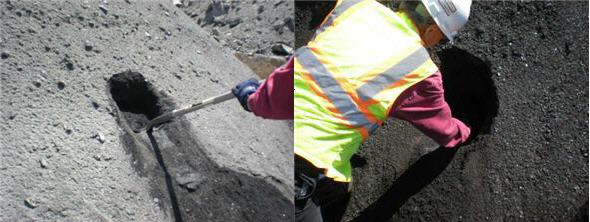Safe carriage of mill scale and mill scale fines - new IMSBC schedule becoming mandatory in 2017
Introduction
Mill scale and mill scale fines (herewith referred to only as mill scale) are brittle flakes consisting mainly of iron oxides, derived as by-products from steel manufacturing. The product can be reused as a feedstock in steel production and is therefore collected from various sources and shipped as a bulk commodity once sufficient quantities have been piled up. Diligent members are advised to take note of the multiple potential pitfalls associated with carrying this particular product.
Classification
Mill scale is currently not a listed cargo with a Bulk Cargo Shipping Name (BCSN) in the IMSBC Code. This is problematic, as it leads some shippers and carriers to believe that it can be carried without heed to the IMSBC Code. However, it is specified in section 1.3 of the Code that unlisted cargoes may only be carried if they have been certified by the competent authority in the country of loading. For hazardous cargoes (Group A or Group B), the authorities of the flag state and the country of unloading will also have to be consulted.
The classification issue will soon be remedied, as a new schedule for "Scale generated from the iron and steel making process" will become mandatory in 2017. The product will then be listed with a proper BCSN in the IMSBC Code and will be classified as a Group A cargo. As of 1 January 2016, the new schedule can already be applied by IMO member governments at their discretion, as an alternative to Section 1.3 certification.
Characteristics
As mill scale is a quite uncommon cargo, knowledge of its qualities is scarce. However, for practical purposes, the cargo can be compared with iron ore fines. It possesses a Transportable Moisture Limit (TML) and is liable to liquefy and/or form a wet base unless appropriate measures are taken. The IMSBC Code Appendix 3 indicates that any fine-grained, damp granular bulk cargo should be tested for flow characteristics, prior to loading. As mill scale is usually collected in outdoors stockpiles and thereby exposed to rainfall, this criterion will often be met.

Water accumulating to various degrees at the bottom of the stockpiles
Sampling
As the scales are derived from different sources it is not a homogenous cargo, thus making proper sampling and testing a challenge. The cargo from one stockpile may have completely different characteristics to cargo from other piles and even within the same pile there may be significant variations.
The importance of sampling all piles put forward for loading is illustrated by a recent case brought to the attention of the Association. A cargo of 30,000 MT of mill scale with a TML of 7.2% had to be carried from the US East Coast to Japan. The cargo had been accumulated from several mills and was thoroughly sampled and tested before shipment. It turned out that the Moisture Content (MC) of the cargo in the stockpiles ranged from 4.14% to 7.1%. The latter result obviously called for some serious deliberation, underlining how dangerous it would have been to rely on the MC of the driest cargo only.
Of even greater concern is the potential for the TML to be equally variable between piles and even within one pile. TML depends mainly on the particle size. Mill scale from different steel mills can differ greatly in particle size and hence TML value.

When taking the samples, the surveyor must take care to dig into the stockpiles to ensure that representative samples are drawn from all layers of the cargo

A bulldozer will be of great assistance to remove the outer layers so that one can reach into the centre of the piles
All Group A cargoes, i.e. those which may liquefy, are required to have been sampled by shippers for moisture content and TML using a 'moisture management plan' as detailed in Section 4.3.3 of the IMSBC Code and IMO circular MSC/Circ. 1454 rev 1 June 2015. Approval of the moisture management procedures should be given by the competent authority of the port of loading and a document stating the procedures have been approved should be provided to the master prior to loading.
Recommendations
Before carrying any cargo liable to liquefy, members are advised to study Skuld's "Bulk mineral cargo liquefaction pocket guide" in detail. Members considering fixing their vessel for carrying mill scale should, in addition to complying with the general advices found in the pocket guide, consider the following recommendations:
- Ensure that the cargo has been certified by the competent authority of the loading country
- Consult the flag state and country of unloading for special requirements or advices before shipment
- Due to the cargo's propensity to form a wet base, take care to trim the cargo as flat as possible. This will prevent dry cargo from sliding on a wet base.
The advice to trim the cargo applies even if the MC is below the TML! - Pump the bilges frequently to reduce the likelihood of a wet base forming. As mill scale may contain oil residues, the bilge water should only be discharged in accordance with local regulations and/or collected on board
Safety always comes first. Should the formation of a wet base and/or signs of liquefaction appear, the crew should therefore seek immediate assistance from the vessel's DPA and consider sailing to a place of refuge. Further, the local Skuld Business unit should be notified promptly and expert advice be retained.
This advice has been prepared with the kind assistance of Dr Penelope Cooke of Brookes Bell.